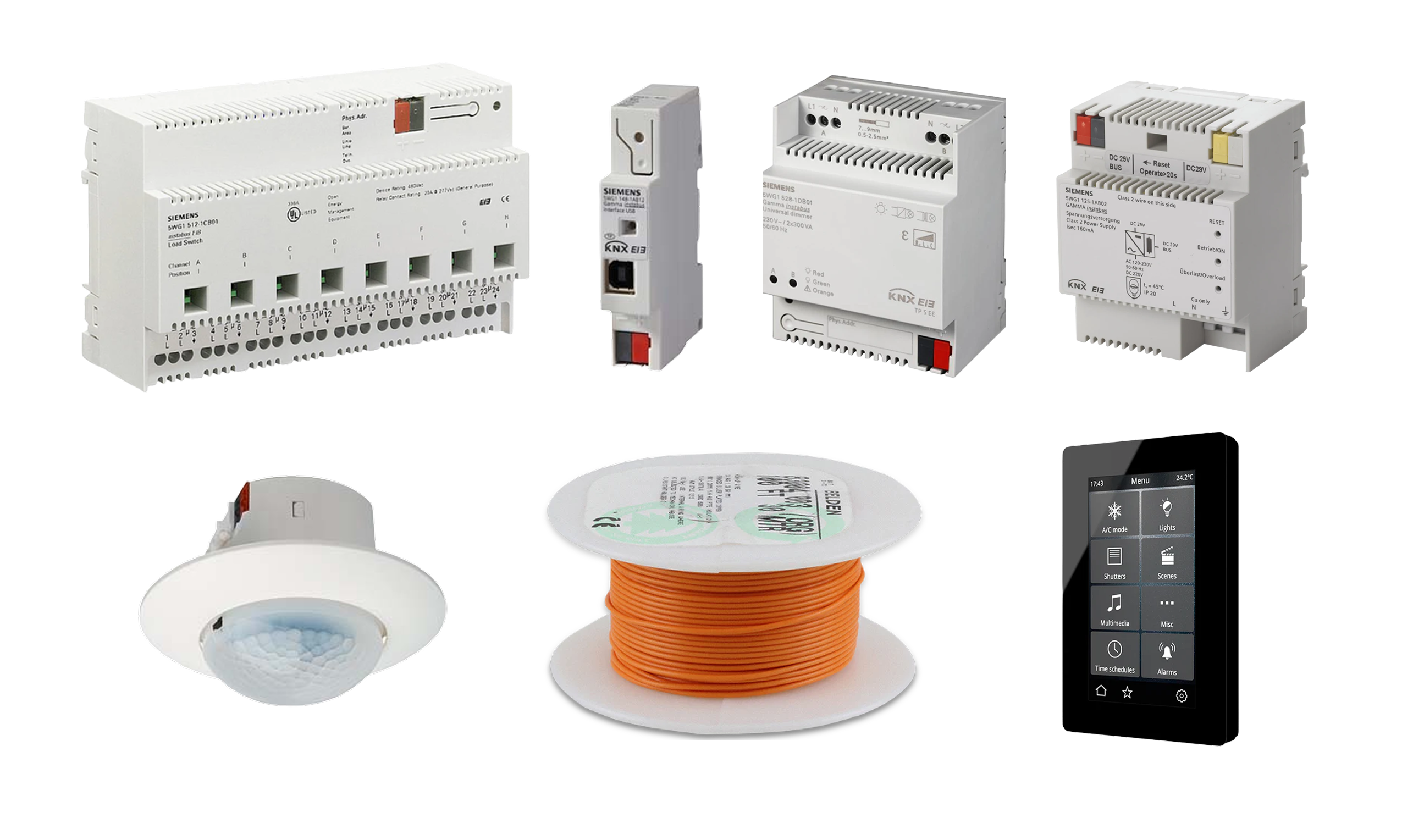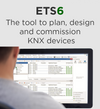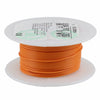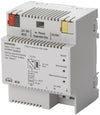- Your one stop shop for KNX devices in the USA 🇺🇸
- (+1) 786 956 6821
- support@knxsupply.com
- Store Location
- Sign in or Register
- Home
-
Categories
- System Devices
- Switching/Shutter Actuators
- Dimming Actuators
- HVAC
- Binary Inputs
- Keypads
- Gateways
- Enclosures and Boxes
- Occupancy Sensors
- Visualization Systems and Touch Panels
- Weather Sensors
- Drivers and ECGs
- Special Sensors
- HVAC
- Accessories
- Cable
- Expert Picks
- KNX Certified Training
- Newest Products
- Best Selling Products
Brands
- Articles
- Contact Us
- Home
- All Collections
- Newest Products
Newest Products
Device to manage and integrate AC units in KNX TP-1 control systems.
Externally powered by the indoor unit.
Features:
• Control of the parameters of the unit.
• KNX Control.
• KNX standard data.
• 3 digital configurable inputs.
• Easily configurable from ETS.
• Communication errors detection.
Device to manage and integrate AC units in KNX TP-1 control systems.
Externally powered by the indoor unit.
Features:
• Control of the parameters of the unit.
• KNX Control.
• KNX standard data.
• 3 digital configurable inputs.
• Easily configurable from ETS.
• Communication errors detection.
Device to manage and integrate AC units in KNX TP-1 control systems.
Externally powered by the indoor unit.
Features:
• Control of the parameters of the unit.
• KNX Control.
• KNX standard data.
• 3 digital configurable inputs.
• Easily configurable from ETS.
• Communication errors detection.
Device to manage and integrate AC units in KNX TP-1 control systems.
Externally powered by the indoor unit.
Features:
• Control of the parameters of the unit.
• KNX Control.
• KNX standard data.
• 3 digital configurable inputs.
• Easily configurable from ETS.
• Communication errors detection.
Device to manage and integrate AC units in KNX TP-1 control systems.
Externally powered by the indoor unit.
Features:
• Control of the parameters of the unit.
• KNX Control.
• KNX standard data.
• 3 digital configurable inputs.
• Easily configurable from ETS.
• Communication errors detection.
Device to manage and integrate AC units in KNX TP-1 control systems.
Externally powered by the indoor unit.
Features:
• Control of the parameters of the unit.
• KNX Control.
• KNX standard data.
• 3 digital configurable inputs.
• Easily configurable from ETS.
• Communication errors detection
Perfect integration of Axis network devices into application scenarios.
Stronger combination of both systems. Motion detector (KNX) starts the action or Cross Line Detection (camera) switches on the light.
Private sphere (masking) can be controlled via KNX, for instance, through presence and absence Camera responds directly to KNX/IP after successful installation.
Third-party applications on the camera can also communicate with KNX.
In addition to network cameras, all Axis network devices with ACAP are also supported
Perfect integration of Axis network devices into application scenarios.
Stronger combination of both systems. Motion detector (KNX) starts the action or Cross Line Detection (camera) switches on the light.
Private sphere (masking) can be controlled via KNX, for instance, through presence and absence Camera responds directly to KNX/IP after successful installation.
Third-party applications on the camera can also communicate with KNX.
In addition to network cameras, all Axis network devices with ACAP are also supported
Perfect integration of Axis network devices into application scenarios.
Stronger combination of both systems. Motion detector (KNX) starts the action or Cross Line Detection (camera) switches on the light.
Private sphere (masking) can be controlled via KNX, for instance, through presence and absence Camera responds directly to KNX/IP after successful installation.
Third-party applications on the camera can also communicate with KNX.
In addition to network cameras, all Axis network devices with ACAP are also supported.
Information
From electricity meter to heating. With the SMART CONNECT KNX Programmable, third-party devices can be connected to the KNX bus in a simple and reliable way.
This enables individualised connection logic to be developed in just a few days.
The barrier to the world of building automation has never been this low.
Features:
• Programming of the application in C# or VB.Net
• Up to 64 KNX communication objects (variable bit length)
• Version 1-0004-005: 1x IP and 1x USB connection
• Version 1-0005-006: 2x IP connection
• Ready-certified KNX device (can be completely configured via ETS) *
• Extensions via firmware updates
The KNX certification for the SMART CONNECT KNX Programmable is limited to the interworking ability with KNX products from other manufacturers.
Information
From electricity meter to heating. With the SMART CONNECT KNX Programmable, third-party devices can be connected to the KNX bus in a simple and reliable way.
This enables individualised connection logic to be developed in just a few days.
The barrier to the world of building automation has never been this low.
Features:
• Programming of the application in C# or VB.Net
• Up to 64 KNX communication objects (variable bit length)
• Version 1-0004-005: 1x IP and 1x USB connection
• Version 1-0005-006: 2x IP connection
• Ready-certified KNX device (can be completely configured via ETS) *
• Extensions via firmware updates
The KNX certification for the SMART CONNECT KNX Programmable is limited to the interworking ability with KNX products from other manufacturers.
Information
Via the SMART CONNECT KNX e-charge II, up to five compatible charging points can be integrated into
the KNX system.
You can find a list of compatible models on our product page.
Features:
• Integration of five charging points per device (completely configurable in ETS)
• Prioritisation of one charging point
• Dynamic load management (DLM)
• Static load management (SLM)
• Mixed operation with various manufacturers
• Support for external electricity meters (ISKRA, PHOENIX CONTACT, generic) at charging points which are not equipped with an integrated electricity meter.
• Grid-supporting control
• Integrated RS485 adapter
• Charging status values: Charging point status (status), Connected (status), Charging (status), Charging complete (status), Interrupt (set/status), Start/Stop (set/status), Unlock (set)
• Charging current status values: Target (status/set), Actual L1 - L3, Actual (status)
• Power status values: Actual L1 - L3, Actual (status)
• Energy status values: Actual L1 - L3, Actual (status)
• Energy consumption status values: Last charge (status), Total (status)
• Fault status values: Fault, Last fault
• Status values: Communication ID (EVCCID) (status), Charging point internal temperature (status), Temperature warning, RFID tag (status), Serial number, Charging point firmware version
• KNX Secure
• Expandable via firmware updates
Information
Features:
• Separate control of up to four televisions
• Television on/off
• "Wake up" the TV device via Wake on LAN and then switch it on
• Volume control (switch sound on/off, increase or lower the volume or set the volume to the transferred value)
• Program control (change to the next or the previous program channel or change to a particular program channel)
• Transfer camera images, e.g. from an external camera
• Bookmark up to ten links
• Showing notices on the TV device: Use up to ten self-defined texts or dynamically display texts from other devices on the TV device, e.g. "Movement detected in garden" from an outside camera, display message as text
• Source selection (Flexibility of choice between the sources of the TV device, e.g. switch conveniently between HDMI input and receivers)
Information
Up to two Loewe televisions can be integrated via the gateway SMART CONNECT KNX Loewe into the KNX and adapted completely to meet your own requirements.
Features:
• Separate control of up to two televisions
• Television on/off
• Sound on/off
• Volume control
• Programme control
• PIP on/off
• Source selection
• Child protection on/off or age-dependently
• OSD text with pre-defined text (ETS) or from KNX (14 bytes)
• Simple integration into KNX (can be completely configured via ETS)
Information
Integrate the innovative single-room control Fonterra Smart Control by viega via the gateway SMART CONNECT KNX viega into the KNX system.
Features:
• Support of 5 base stations each with up to 8 room temperature controllers and 12 outlets
• Room temperature control
• Switching between heating and cooling mode
• Power level control
• Absence control
• System information such as error messages, actual temperature or updates from viega
• Simple integration in KNX (can be completely configured via ETS)
• Extensions via firmware updates
If you wish to use the SMART CONNECT KNX viega, you must use Fonterra Smart Control for Fonterra surface temperature
regulating systems in Version 3 or higher with firmware version 2.8-4.43 or higher, supplied by Viega GmbH & Co. KG.
Information
Access to a Vaillant geoTHERM/3 heat pump as well as to three Vaillant VR60 mixer modules and up to six Vaillant VR90
remote control devices via the SMART CONNECT Mod bus Vaillant as a Mod bus TCP/IP gateway.
The established Mod bus TCP/IP standard (e. g. Schneider SmartStruxure, Fidelix) enables the convenient integration of Vaillant heat pumps into the building technology.
Features:
• Control of operating mode and temperature set point values for the heating circuits
• Control of operating mode for the heat pump
• Control of operation mode for up to three mixer modules
• Control of operation mode and temperature set point value for hot water supply
• Control of the operation mode of an auxiliary heater
• Access to status information such as temperature and pressure sensor values for integration into the building technology
• Easy configuration of system dimensioning using the device web page
• Extensions via firmware updates
Compatible with Vaillant geoTHERM/3 V WS220/3 - 460/3 heat pumps.
Information
Intelligent heating control via KNX: Together with the MiPro Sense system control, the SMART CONNECT KNX Saunier Duval offers eBUS and KNX integration.
Features:
• Control of operation mode and temperature set point values for up to three heating zones
• Control of operation mode and temperature set point value for hot water supply
• System information like service mode, error messages, date and time, outside temperature and system status
• Heating circuit status values: Pump status, flow set point temperature, flow temperature, minimum flow set point temperature for cooling mode, heating curve for each heating circuit
• Hot water status values: Circulation pump status, charging pump/3-way valve status, hot water temperature
• Display of temperature and error status for up to eight heat generators
• Yield values of solar systems and heat pumps
• Consumption values for hot water supply and heating (electricity and gas)
Information
From electricity meter to heating.
With the SMART CONNECT KNX Programmable, third-party devices can be connected to the KNX bus in a simple and reliable way.
This enables individualised connection logic to be developed in just a few days.
The barrier to the world of building automation has never been this low.
Features:
• Programming of the application in C# or VB.Net
• Up to 64 KNX communication objects (variable bit length)
• Version 1-0004-005: 1x IP and 1x USB connection
• Version 1-0005-006: 2x IP connection
• Ready-certified KNX device (can be completely configured via ETS) *
• Extensions via firmware updates
* The KNX certification for the SMART CONNECT KNX Programmable is limited to the interworking ability with KNX products from other manufacturers.
Information
Operate the Philips Hue lighting system via KNX. Colour value, temperature and brightness can be defined for every light, making each completely customisable.
Features:
• Separate control of up to 25 Philips Hue lights
• Support of up to five Philips Hue Bridges per device
• Switching and dimming
• Individual control of RGB colour values
• Individual control of the colour temperature
• Configuration of switch-on brightness per lamp via ETS or device website
• Configuration of dimming behaviour per lamp via ETS or device website
• Calling up Philips Hue scenes
• Signal flashing of Philips Hue scenes (specific duration, return to original state)
• Alert flash per lamp
• Colour gradient function per lamp
• Connection status of Bridge or lamps on KNX
• ETS product database entry with channel structure
• Simple integration into KNX
• Extensions via firmware updates
Philips and Hue are registered trade marks of Koninklijke Philips Electronics NV.
With the ise smart connect KNX Remote Access, KNX can be conveniently and safely accessed from anywhere around the world.
Whether via computer, tablet, or smart phone – you get safe communication completely without configuration! And installation is child’s play.
Simply connect ise smart connect KNX Remote Access to the KNX and you are done! Access is only possible via smart phone, tablet, or laptop.
Just start the ETS Secure Access Client that accesses the installation’s KNX IP interfaces.
Or the web browser, that let’s you access the local HTML pages. And further configuration? Unnecessary! That’s it.
Features:
- Secure data transmission of HTML and ETS communication, encrypted from the first packet
- Optimized KNX / IP communication also via mobile data connections usable
- Integrated IP interface with up to 3 tunnel connections (ETS bus- or group monitoring)
- Also maintain non-KNX systems remotely thanks to the integrated VPN
- Datalogger and timer functionality
- Configuration-free when using DHCP
- Access management with users and groups
- Supporting web based visualization applications
- Access to cameras and other web sites in the LAN
- For the latest version of ETS4 or ETS5






















































